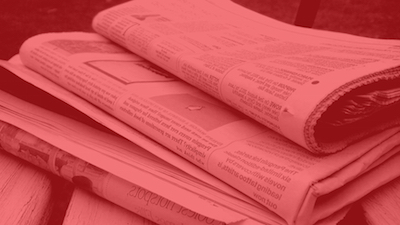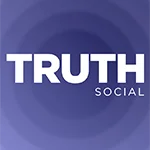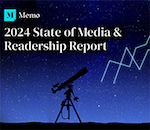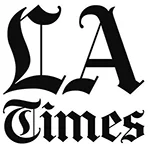The coronavirus (COVID-19) pandemic has dominated news coverage in recent weeks to become one of the most covered events in recent history, producing more than 1.5 million articles—at an average of about 1,400 articles per day—since early January, according to analytics firm NewsWhip.
But COVID-19 has also put journalism’s future in peril, as the newspaper industry—already on shaky ground due to years of plummeting ad revenues—faces yet another economic downturn. As companies in every sector affected by the disaster scale back their advertising budgets, the financial impact of these cuts can be seen in the latest wave of closures and layoffs that’ve hit the news publishing world just this week.
Like the 2008 recession, the latest global economic crisis has left many publishers wondering how—or if—they’ll be able to ride out the pandemic.
Widespread layoffs shake industry
 |
COVID-19 was cited as a reason Playboy Enterprises decided to kill the print edition of its 66-year-old flagship Playboy magazine, which will cease publication after its current Spring issue. San Diego Magazine laid off nearly its entire staff and said it would fold after 72 years. Weekly publication Sacramento News & Review announced its closure and laid off most of its workforce. Seattle-based alt weekly The Stranger suspended its print edition and furloughed more than half of its staff “due to the hellscape of unforeseen economic events brought on by the coronavirus.” Time Out Group, which publishes 40 magazines in city markets around the world, announced it was temporarily suspending its print editions for an unknown period of time. New England Newspapers—which publishes the Brattleboro Reformer, Bennington Banner and the Manchester Journal—has slashed its page count and asked staff to take a temporary furlough. Dallas-based publisher D Magazine announced it had laid off 15 employees and implemented salary cuts for all remaining employees.
The news isn’t much better abroad. Canadian newspaper company SaltWire Network said it’s laying off about 40 percent of its workforce and suspending production of its weekly newspapers for at least the next 12 weeks, in light of “rapidly changing economic conditions related to COVID-19.” Northern Ireland publisher Spectator Newspapers said its papers—which includes the County Down Spectator, Newtownards Chronicle and the Mourne Observer—were forced to cease publication due to COVID-19. London publisher City AM will shutter its print editions and go online in an effort to cut costs until it becomes viable to print again, with the newspaper’s entire staff being asked to accept a 50 percent pay cut. London-based JPIMedia, which publishes dozens of newspapers around the UK, is suspending print production of its free papers following a “substantial reduction in advertising,” leaving major towns such as Milton Keynes without a single newspaper.
News consumption explodes
While the economic fallout has hit print publishers hard, COVID-19 coverage is simultaneously driving an unprecedented sea-change in Americans’ media consumption habits, with online news traffic and TV viewership surging as more people find themselves isolating at home in light of new social distancing measures.
A report by technology company Parse.ly discovered that the coronavirus pandemic has caused online news sites’ content views to climb by 60 percent. Web traffic in the U.S. from Facebook to other websites increased by more than 50 percent last week from the week before, according to a New York Times report.
There’s no question COVID-19 coverage is driving this traffic spike. Content mentioning the coronavirus now comprises 15 percent of total daily web traffic, according to the Parse.ly report. NewsWhip found that coronavirus content accounts for about 26 percent of English language content in its database of more than 10 million articles.
Things aren’t much different in the world of television, where near-constant COVID-19 coverage has resulted in massive viewership and ratings gains. Nielsen predicted that TV viewership would climb 60 percent as Americans tune in en masse for coronavirus-related updates, and estimated that this week, local TV news viewership has been up seven percent for 25 of the largest local markets across the country. Daytime TV viewership alone has seen a spike of 16 percent in recent weeks, according to viewer measurement company Samba TV. On cable, CNN saw ratings skyrocket 193 percent between March 16-20, followed by similar upticks at Fox News and MSNBC (89 percent and 56 percent, respectively).
And yet, these growing audiences have done nothing to stop broadcast and digital news outlets' freefalling ad budgets. Interpublic research firm Magna Global projects the U.S. ad market will decline 2.8 percent this year. Analysts at investment bank Cowen & Co. anticipate that Facebook and Google alone could lose more than $44 billion in ad revenue because of the COVID-19 pandemic.
Future uncertain
The coronavirus crisis has placed many media groups in the unusual position of having the audiences they’ve always dreamed of, yet with no ad dollars to support them. When it comes to print publishers, subscription sales alone won’t save them; in fact, to meet the recent uptick in demand, some are now taking down their paywalls—among them The Atlantic, The New York Times and the Washington Post—so readers can get free coronavirus-related heath and news updates. And publisher events, recently seen as a financial lifeline for magazine and newspaper brands, are obviously out.
“COVID-19 has caused the public to focus very intently on local news and information—which has caused bumps in traffic and digital subscriptions,” David Chavern, president and CEO of newspaper trade group the News Media Alliance, told O’Dwyer’s. “But in a world dominated by Google and Facebook, traffic is not very monetizable, and the increase in digital subscriptions has in no way matched the rapid contraction in the ad markets. News publishers are suffering financially just when the world needs their information the most.”
Some had hoped Congress’ $2 trillion stimulus bill—the largest economic rescue measure in history—would provide some much-needed economic relief for local newspapers, the same way it’s being used to bail out airlines and the hotel industry. In fact, House Speaker Nancy Pelosi’s earlier proposed version of the bill had provided recovery aid for community newspapers affected by the coronavirus. That provision does not appear in the Senate’s finalized March 25 bailout package (though it does contain a $75 million provision to support public broadcasting).
“Congress should be giving even more to support public and noncommercial media of all kinds. These are highly trusted and essential sources of information that are accessible and available to everyone of all ages,” Craig Aaron, co-CEO of nonpartisan press group Free Press Action, told O’Dwyer’s. “With more support not only will they stay afloat, but they could boost their educational programming, from preschool to high school, while the kids are stuck at home and put more reporters on the beat and on the air. In a crisis like this, journalists are essential workers—and our recovery policies need to reflect that reality."
Without Congress' help, it may take financial support from nonprofits, foundations and the private sector to save print and digital journalism. In March, media advocacy group the Local Media Association partnered with journalism nonprofit the Lenfest Institute for Journalism and the Facebook Journalism Project to provide $1 million in grants to North American newsrooms covering the coronavirus. Some publishers, such as Seattle’s The Stranger or Vermont’s The Williston Observer, have resorted to soliciting for donations to stay afloat.
Steven Waldman, president of journalism nonprofit Report for America, has advocated that the government spend more money on COVID-19-related advertising, which would have the added benefit of educating the public about the pandemic while supporting local news organizations.
David Cohen, president of ad industry trade group the Interactive Advertising Bureau, has suggested that brands purchase ads to run alongside COVID-19-related coverage on credible news sites, in an effort to help support the news industry and help keep Americans informed.
“The Stimulus 3 package will help somewhat, particularly for publishers who can be classified as small businesses, and we are currently evaluating what more the federal government could or should do,” Chavern said. “But we will also have to get back to the problem that the digital ecosystem does not adequately reward quality journalism, and if we want local news and information in the future, that is going to have to be fixed.”


 Trump Media & Technology Group today reported a $58.2M net loss on $4.1M in 2023 revenues, a disclosure that drove its stock price down 22.6 percent to $47.96.
Trump Media & Technology Group today reported a $58.2M net loss on $4.1M in 2023 revenues, a disclosure that drove its stock price down 22.6 percent to $47.96. Barry Pollack, an attorney at Wall Street’s Harris St. Laurent & Wechsler, has registered Julian Assange as a client with the Justice Dept. “out of an abundance of caution.”
Barry Pollack, an attorney at Wall Street’s Harris St. Laurent & Wechsler, has registered Julian Assange as a client with the Justice Dept. “out of an abundance of caution.” Paramount Global to slash 800 jobs in what chief executive Bob Bakish calls part of an effort to “return the company to earnings growth"... Rolling Stone editor-in-chief Noah Shachtman is exiting at the end of the month due to disagreements with chief executive Gus Wenner over the direction the magazine is taking... The New York Times broke the $1 billion barrier in annual revenue from digital subscriptions in 2023... Press Forward is investing more than $500 million to strengthen local newsrooms.
Paramount Global to slash 800 jobs in what chief executive Bob Bakish calls part of an effort to “return the company to earnings growth"... Rolling Stone editor-in-chief Noah Shachtman is exiting at the end of the month due to disagreements with chief executive Gus Wenner over the direction the magazine is taking... The New York Times broke the $1 billion barrier in annual revenue from digital subscriptions in 2023... Press Forward is investing more than $500 million to strengthen local newsrooms. The majority of news articles are read within the first three days of publication, according to a recent report.
The majority of news articles are read within the first three days of publication, according to a recent report. The Los Angeles Times gives pink slips to 115 people or 20 percent of its newsroom staff... TIME is also laying off about 30 employees, which is approximately 15 percent of its editorial staff... The Baltimore Banner, which was launched by Stewart Bainum in 2022 after he failed to buy the Baltimore Sun, added 500 subscribers per day in the three days following Sinclair Broadcast Group's deal to purchase the Sun.
The Los Angeles Times gives pink slips to 115 people or 20 percent of its newsroom staff... TIME is also laying off about 30 employees, which is approximately 15 percent of its editorial staff... The Baltimore Banner, which was launched by Stewart Bainum in 2022 after he failed to buy the Baltimore Sun, added 500 subscribers per day in the three days following Sinclair Broadcast Group's deal to purchase the Sun.


 Have a comment? Send it to
Have a comment? Send it to 
No comments have been submitted for this story yet.